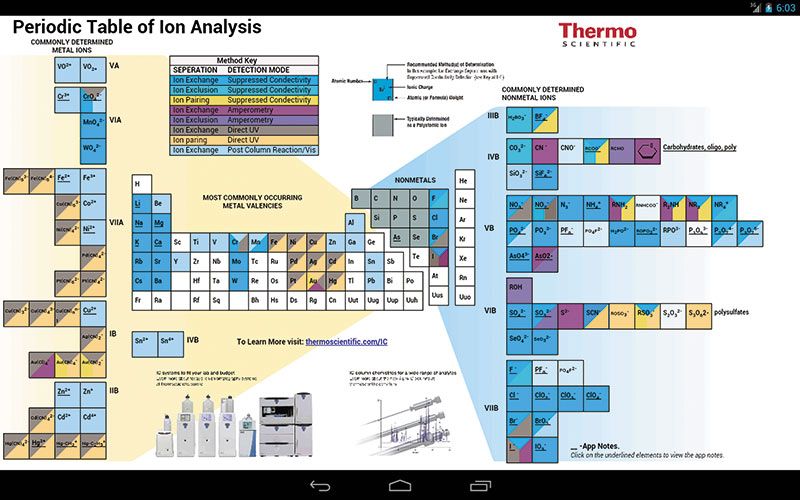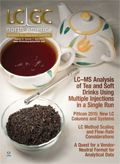App of the Month: Periodic Table of Ion Analysis
The Periodic Table of Ion Analysis app is designed as a reference of optimal methods for separating and detecting the most commonly determined ions on the periodic table
IS THERE AN APP FOR THAT?
HIGHLIGHTS OF APPS FOR SEPARATION SCIENCE
APP NAME: Periodic Table of Ion Analysis
OFFERED BY: Thermo Fisher Scientific
PLATFORMS: Android (requires 2.3 and up). Compatible with iPad (requires iOS 6.0 or later).
WHAT IT DOES: The Periodic Table of Ion Analysis app is designed as a reference of optimal methods for separating and detecting the most commonly determined ions on the periodic table. According to the company, users can click on their element of choice to view application and technical notes to achieve the best chromatographic performance to simplify their analysis.
COST: Free


Thermodynamic Insights into Organic Solvent Extraction for Chemical Analysis of Medical Devices
April 16th 2025A new study, published by a researcher from Chemical Characterization Solutions in Minnesota, explored a new approach for sample preparation for the chemical characterization of medical devices.
Sorbonne Researchers Develop Miniaturized GC Detector for VOC Analysis
April 16th 2025A team of scientists from the Paris university developed and optimized MAVERIC, a miniaturized and autonomous gas chromatography (GC) system coupled to a nano-gravimetric detector (NGD) based on a NEMS (nano-electromechanical-system) resonator.
Miniaturized GC–MS Method for BVOC Analysis of Spanish Trees
April 16th 2025University of Valladolid scientists used a miniaturized method for analyzing biogenic volatile organic compounds (BVOCs) emitted by tree species, using headspace solid-phase microextraction coupled with gas chromatography and quadrupole time-of-flight mass spectrometry (HS-SPME-GC–QTOF-MS) has been developed.
A Guide to (U)HPLC Column Selection for Protein Analysis
April 16th 2025Analytical scientists are faced with the task of finding the right column from an almost unmanageable range of products. This paper focuses on columns that enable protein analysis under native conditions through size exclusion, hydrophobic interaction, and ion exchange chromatography. It will highlight the different column characteristics—pore size, particle size, base matrices, column dimensions, ligands—and which questions will help decide which columns to use.












